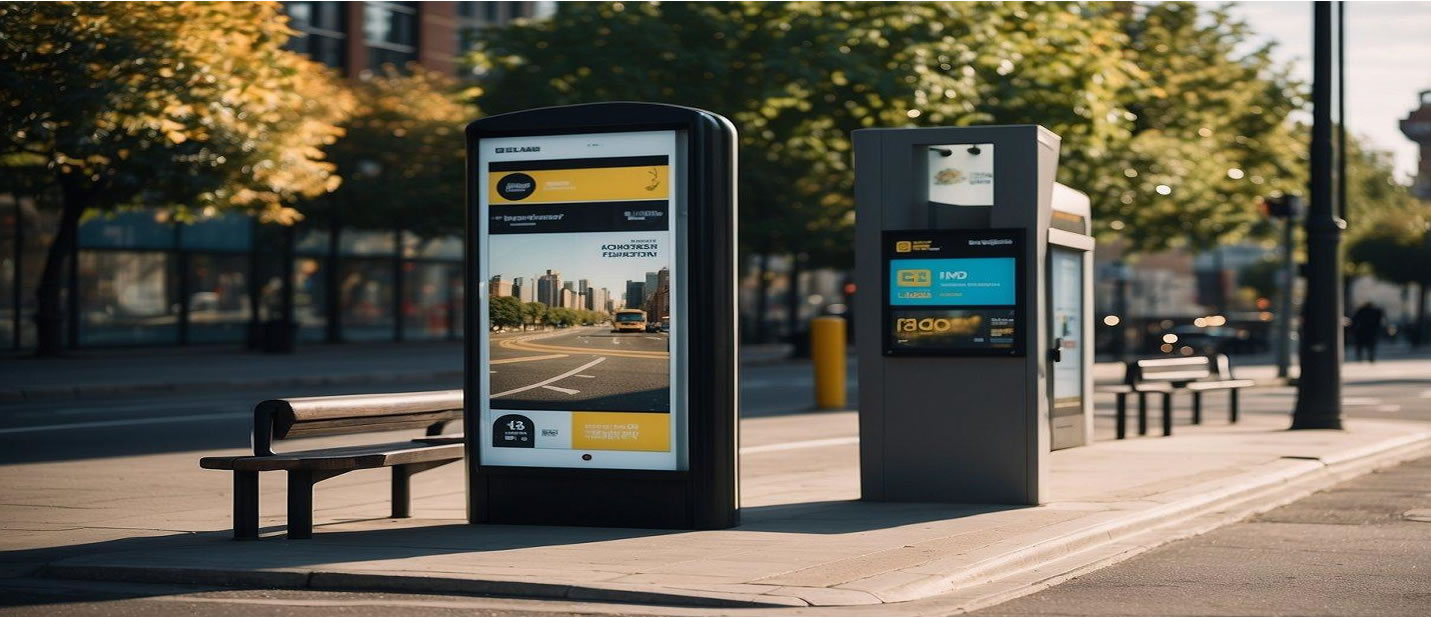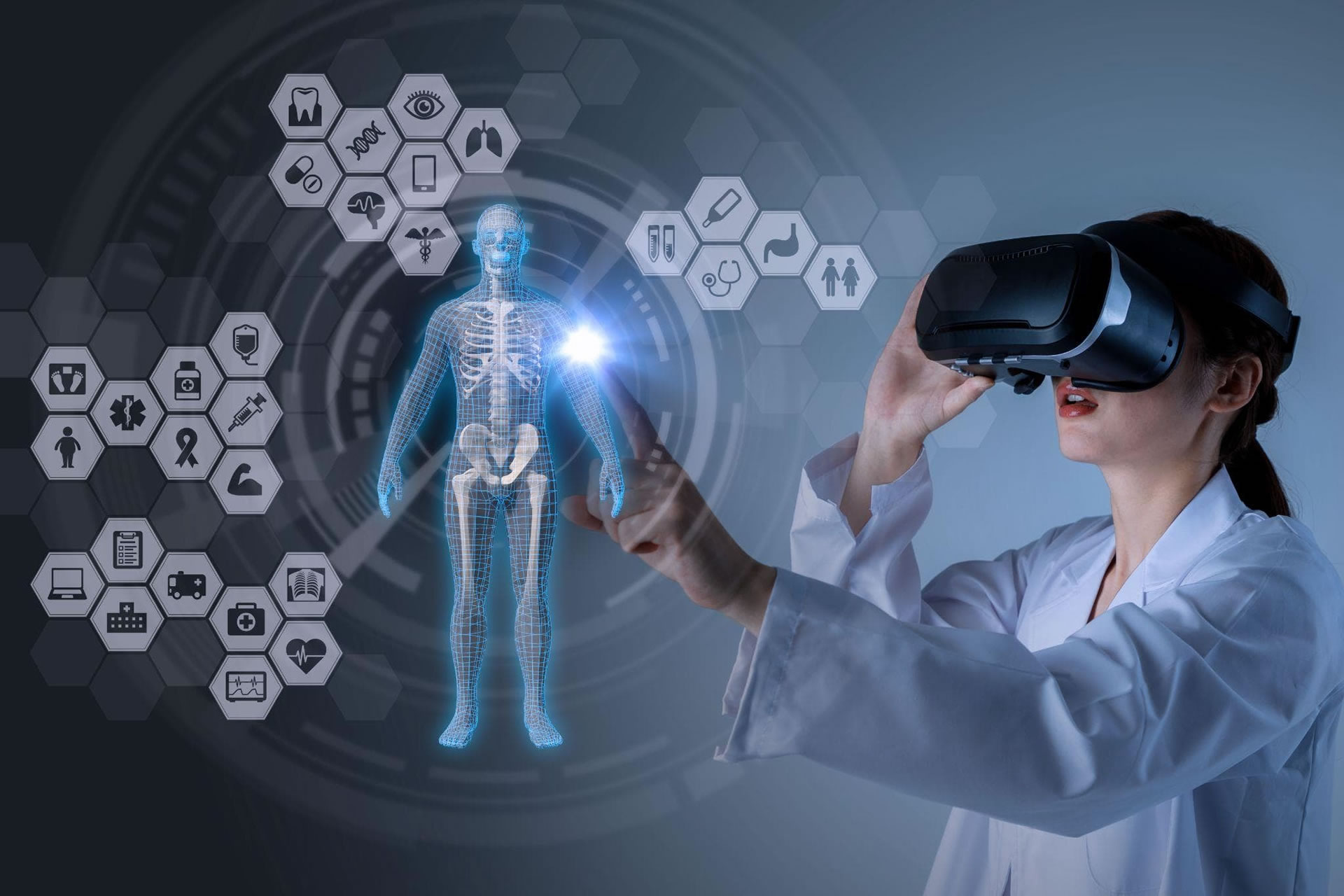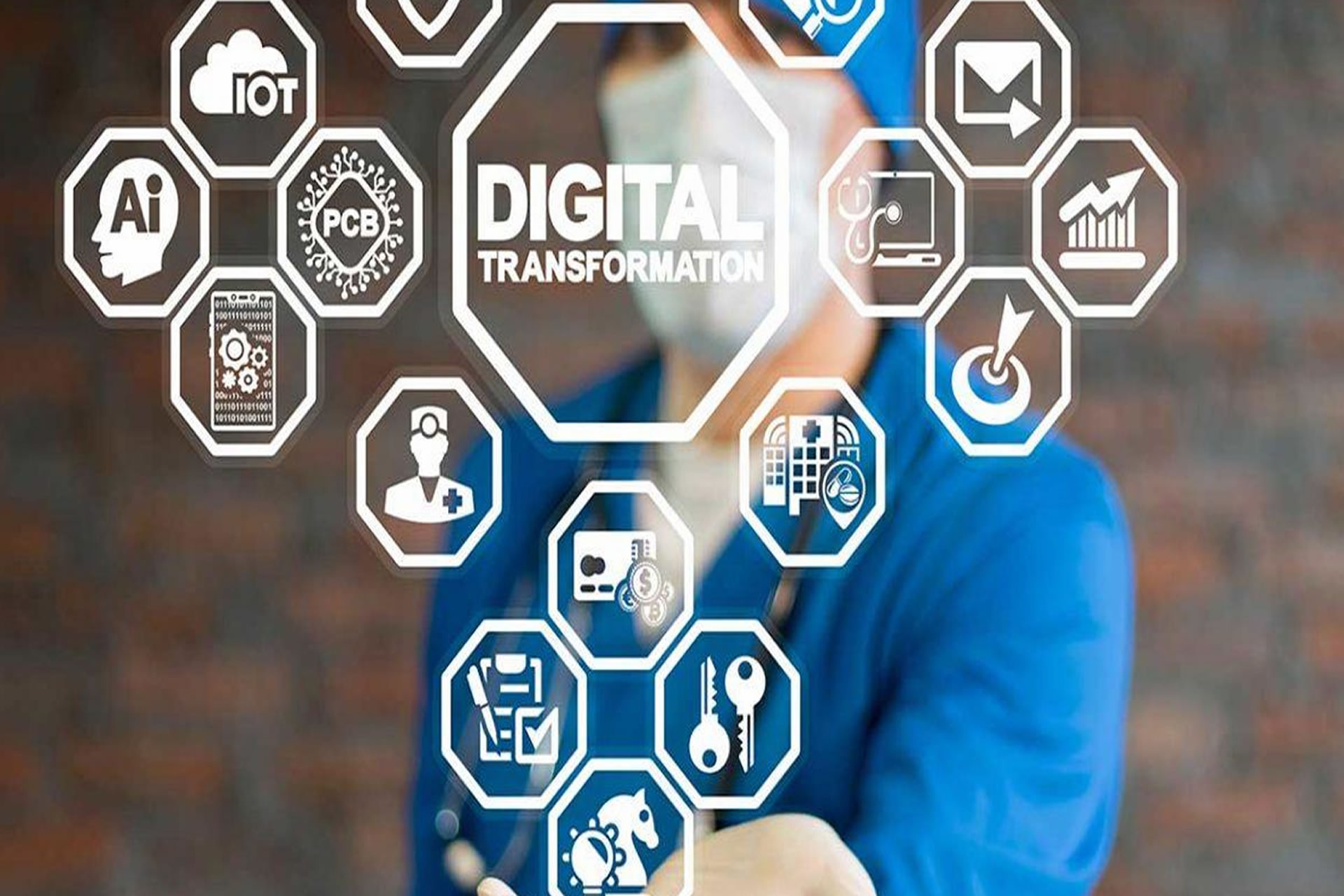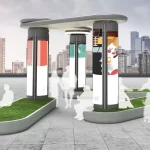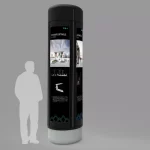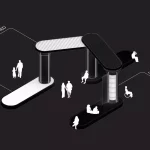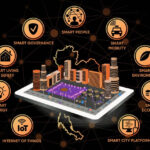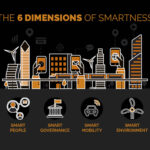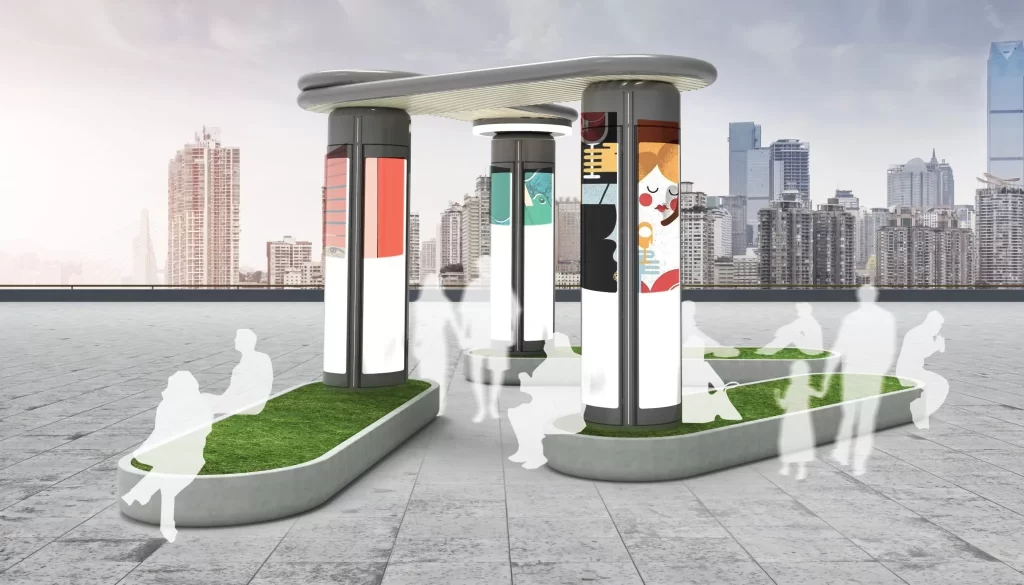Overview
The technological revolution is redefining the way we live, and smart cities represent the future of modern urbanization. This project aims to transform the city into an innovative ecosystem, where technology and sustainability merge to create a more efficient, safe, and connected environment. Through advanced solutions in mobility, energy, health, and safety, the project seeks to optimize urban management, improve citizens’ quality of life, and make smarter use of available resources. Innovation in the Smart Cities system is not just an option, but a necessity to ensure sustainable growth and better coexistence in our cities.
Goals
Smart Mobility:
Implementation of an interconnected public transportation system with dedicated lanes, bicycle and electric scooter stations, traffic management through sensors and smart traffic lights that optimize vehicle flow in real time. Mobile applications with real-time information on routes and wait times will be included, as well as incentives for the use of sustainable transportation.
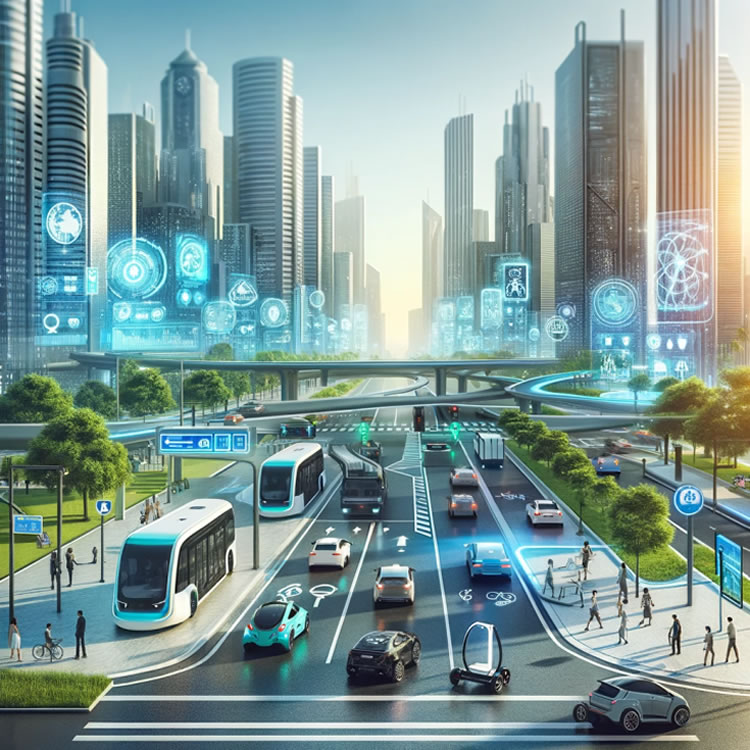
Energy and Environment:
Installation of solar panels on public buildings to generate clean energy, electric vehicle charging stations at strategic locations, LED public lighting, and light sensors to reduce energy consumption. In addition, environmental monitoring systems will be integrated to assess air and water quality, enabling preventive measures to be taken against pollution.
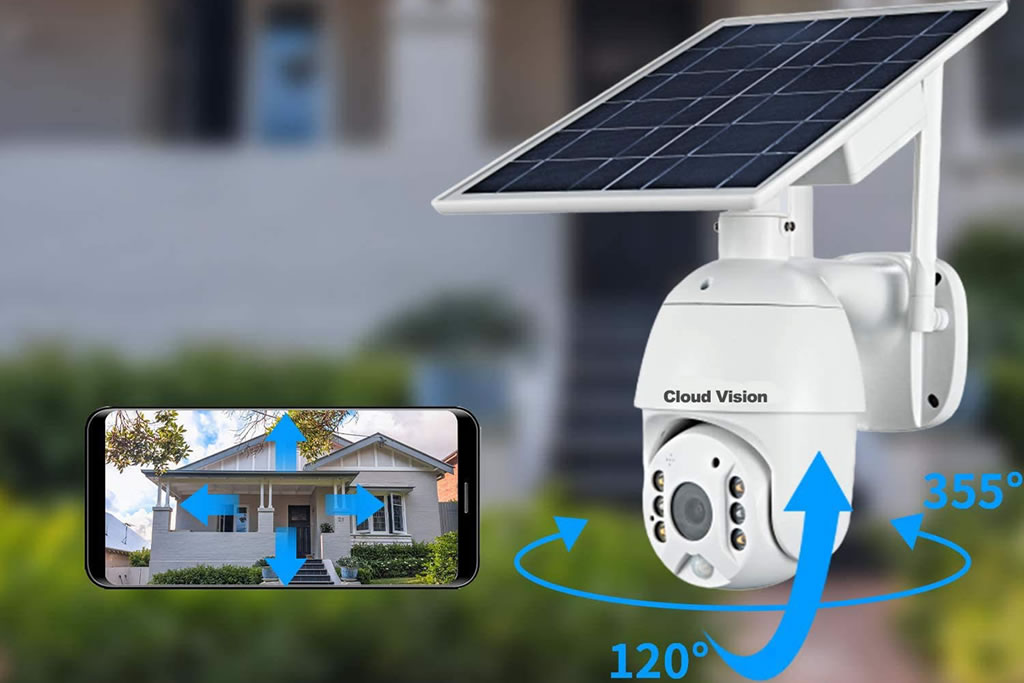
Waste Management:
Installation of smart containers with fill sensors to optimize garbage collection, reducing operating costs and CO2 emissions. An automated recycling system will be implemented with incentives for citizens who properly separate waste, promoting a circular economy.
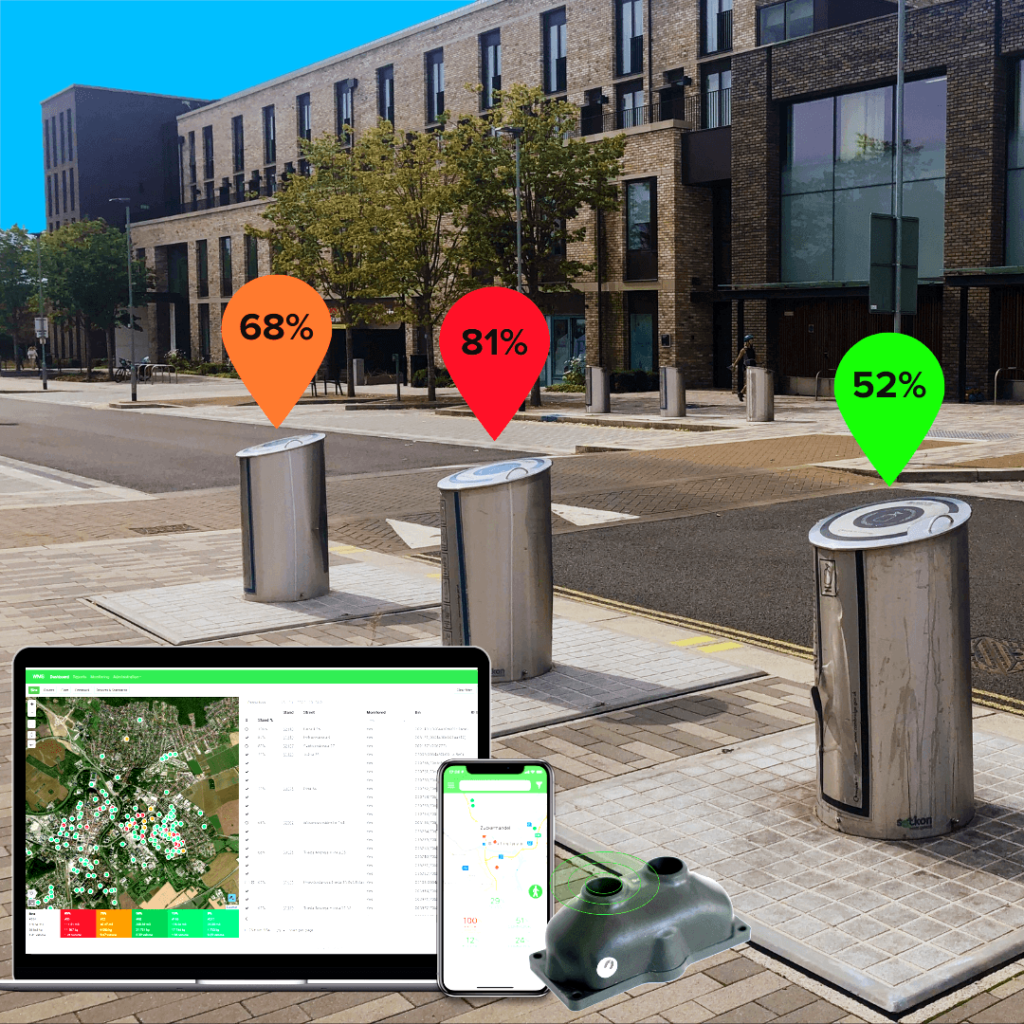
Citizen Security:
Installation of cameras with facial recognition and abnormal behavior analysis, alerting authorities to potentially dangerous situations. Drones will be used for patrols in high-risk areas, and artificial intelligence systems will be integrated to analyze crime patterns and improve crime prevention.
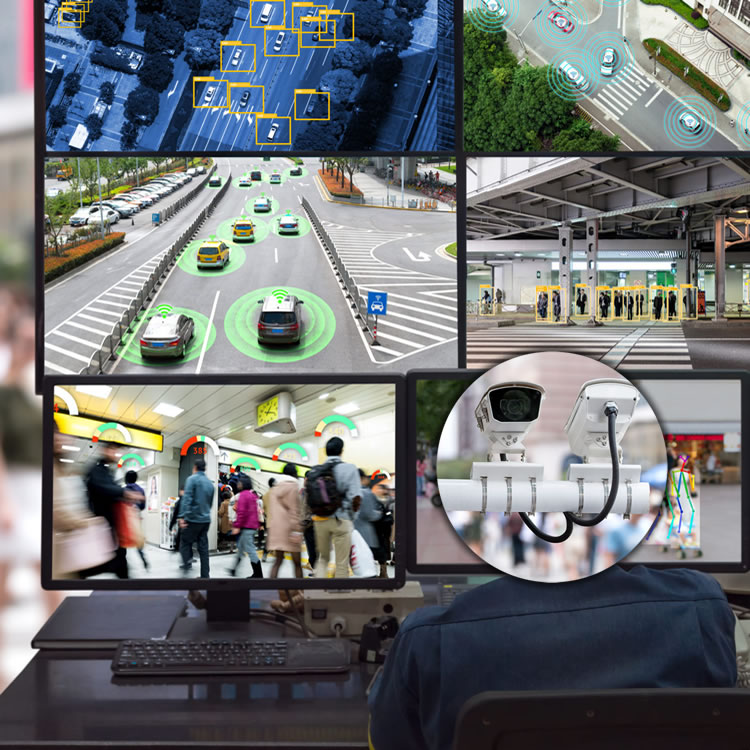
Digital Infrastructure:
Creation of a single smart city platform that allows citizens to manage procedures, report urban incidents, and access real-time information on public services. Mobile applications will be developed with direct communication functions between citizens and municipal authorities.
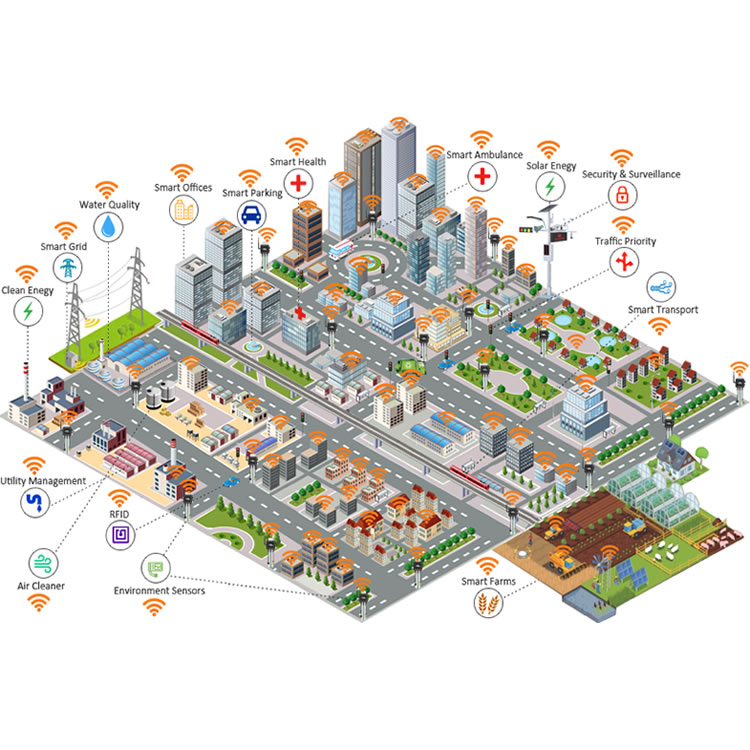
Smart Hospitals:
Implementation of accessible electronic medical records in all healthcare centers, remote monitoring systems for chronically ill patients, and virtual healthcare through telemedicine. Biometric sensors will be integrated into emergency departments to automatically assess patients’ vital signs and prioritize hospital triage, ensuring faster and more effective care.
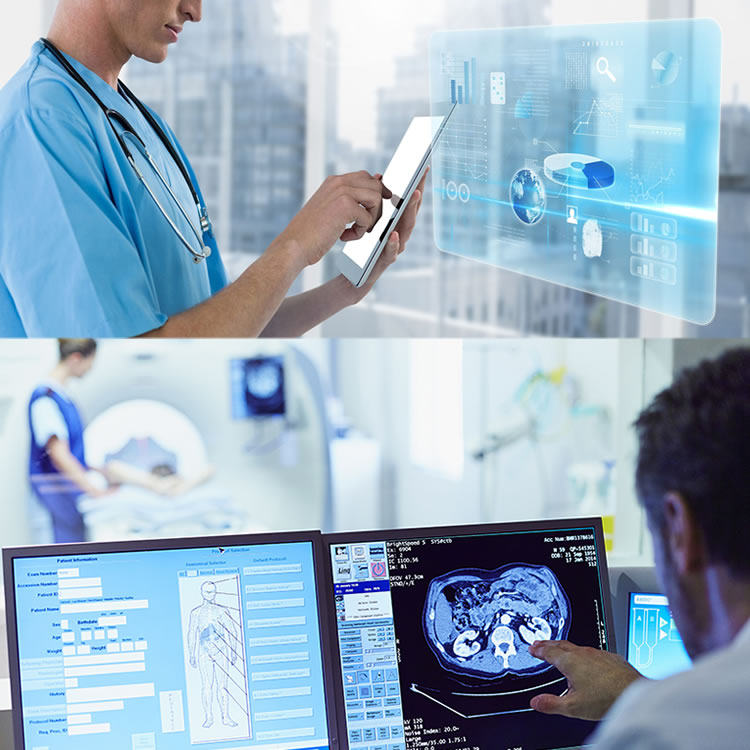
Integrated Communications Platform:
Creation of a unified communications system between emergency services, firefighters, and police, reducing response times to critical incidents. The platform will include geolocation of rescue units and predictive algorithms for optimal resource allocation in emergencies.
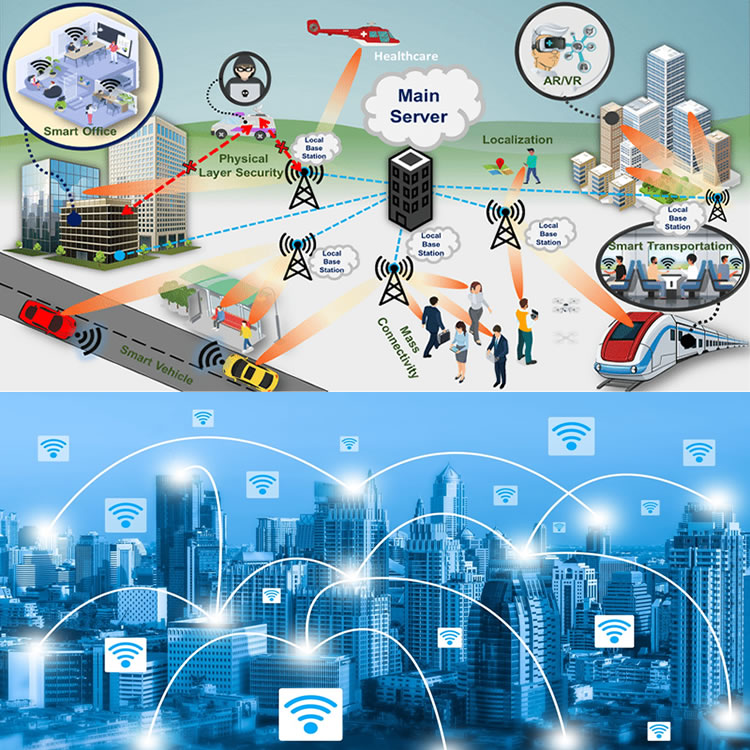
Smart Schools:
Development of a digital education management system that will allow teacher attendance monitoring through biometric recognition, digitalization of the administrative controller, and real-time monitoring of student attendance and performance. Interactive platforms with augmented reality educational content, artificial intelligence to personalize learning, and communication systems between students, teachers, and parents will be incorporated.

Inmediate Goals
Smart Firefighter Project:
Innovation in Rescue and Safety
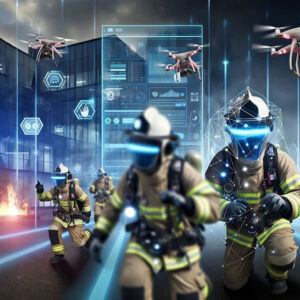 Overview:
Overview:
The Smart Firefighter Project seeks to revolutionize rescue operations through the use of advanced technologies such as UAV (Unmanned Aerial Vehicle) systems and rescue robots, with the goal of maximizing emergency response efficiency, minimizing risks to firefighters, and improving success rates. By integrating these smart devices into firefighters’ daily operations, their ability to monitor, analyze, and respond to emergency situations, such as fires, industrial accidents, confined space rescues, and others, is improved. This system not only enables a faster response but also reduces exposure to fire and other hazards for rescue personnel.
1. Components of the Smart Firefighter System:
1.1 UAV Systems for Aerial Monitoring:
UAV systems equipped with high-definition cameras and thermal and gas sensors are crucial for obtaining a real-time aerial view of an emergency, allowing firefighters to make informed decisions without putting their lives at risk.
 ● Technical Features:
● Technical Features:
○ High-resolution thermal cameras: To identify hot spots, determine the spread of fire, and locate trapped victims.
○ Gas sensors: To measure the concentration of hazardous gases such as carbon monoxide, carbon dioxide, and other toxic compounds generated during a fire.
○ Flight endurance: Up to 90 minutes of continuous flight, depending on conditions, with the ability to operate in extreme conditions such as high temperatures or rain.
○ Payload capacity: Ability to carry additional devices such as small aerial fire extinguishers or thermal radiation meters.
○ Live Streaming Technology: Live video streaming allows rescue teams to view the affected area without exposing themselves to direct risk.
● Advantages:
○ Real-Time Vision: UAV systems provide accurate visual information about the fire and its surroundings, allowing firefighters to better assess the environment before entering.
○ Risk Reduction: Minimizes firefighters’ exposure to high-risk areas, such as areas with dense smoke or uncontrolled fires.
○ Precise Victim Location: UAV systems with thermal cameras can identify trapped or unconscious people in burning buildings, speeding up location and rescue.
1.2 Autonomous Rescue Robots:
Rescue robots are designed to enter hard-to-reach areas, such as collapsed structures or areas with extreme temperatures, performing rescue tasks that would be dangerous for firefighters. These robots are equipped with sensors and cameras to detect victims, as well as tools to assist in opening doors or debris.
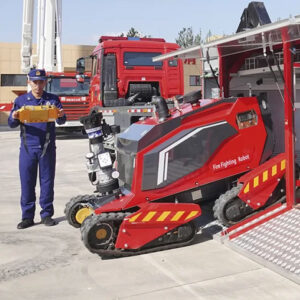 ● Technical Features:
● Technical Features:
○ 3D Sensors: To map the environment and detect obstacles in real time, enabling autonomous navigation in collapsed or hard-to-reach areas.
○ Thermal Cameras: To detect body heat in rescue situations, even under debris or in dark spaces.
○ Carrying Capacity: Some models are equipped with claws or robotic arms to move debris or open doors, and even to provide basic first aid such as administering oxygen.
○ Fire resistance: Ability to operate in extremely high temperatures, withstanding temperatures up to 800°C.
○ Autonomy: Continuous operation for 1 to 3 hours, depending on the mission and robot type.
○ Real-time communications: Robots send live sensor data and video to human operators to make informed decisions.
● Advantages:
○ Access to hazardous areas: Robots can enter collapsed buildings, tunnels, or areas where fires are too intense, allowing the rescue of victims in areas inaccessible to humans.
○ Reduction in risk exposure: Firefighters can deploy robots instead of risking their lives, minimizing their exposure to hazards such as cave-ins, toxic gases, or structural collapse.
○ First response in difficult rescues: The robot can perform a preliminary assessment of the situation, removing obstacles and providing information on the location of victims or fire sources, allowing firefighters to arrive better prepared.
1.3 Intelligent Management and Coordination Platform:
To effectively integrate UAV systems and rescue robots, a centralized intelligent management and coordination platform is used, which centralizes data from UAVs, robots, and other emergency systems in real time.
● Technical Features:
○ Real-time interface: Rescue teams receive all information through a central platform, allowing them to monitor the progress of operations, the location of victims, the spread of the fire, and the location of resources.
○ Integration with GPS systems: Enables geolocation of UAVs and robots, facilitating task assignment and resource tracking on the ground.
○ Artificial intelligence (AI) for decision-making: The system analyzes data from UAVs and robots to determine high-risk areas, create safe evacuation routes, and optimize rescue efforts.
Advantages:
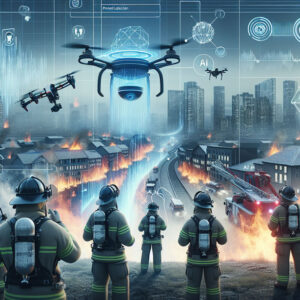 2. Advantages of Project Smart for Firefighters:
2. Advantages of Project Smart for Firefighters:
2.1 Reducing Fire Exposure:
● With UAV systems and rescue robots, firefighters can obtain valuable information without having to directly enter the most dangerous areas of the fire, significantly reducing the risk of exposure to fire and toxic smoke.
2.2 Improving Response Speed:
● The presence of UAV systems and robots allows firefighters to assess emergency situations more quickly. UAV systems provide an aerial view, while robots can enter hard-to-reach areas, optimizing rescue strategy and resource allocation.
2.3 Increasing Operational Efficiency:
● Using robots and UAVs for specific tasks, such as locating victims, initial fire suppression, or mapping collapsed areas, frees up firefighters to focus on higher-priority activities, such as direct rescue and protecting adjacent areas.
2.4 More Efficient and Precise Rescue:
● Advanced thermal UAV and rescue robot technology increases the accuracy of victim location and hidden hazard identification, enabling safer and more effective rescues.
2.5 Improved Safety for Firefighters:
● By delegating dangerous tasks to UAVs and robots, firefighters can focus on direct rescue operations with less exposure to danger, contributing to a reduction in injuries and deaths during emergency operations.
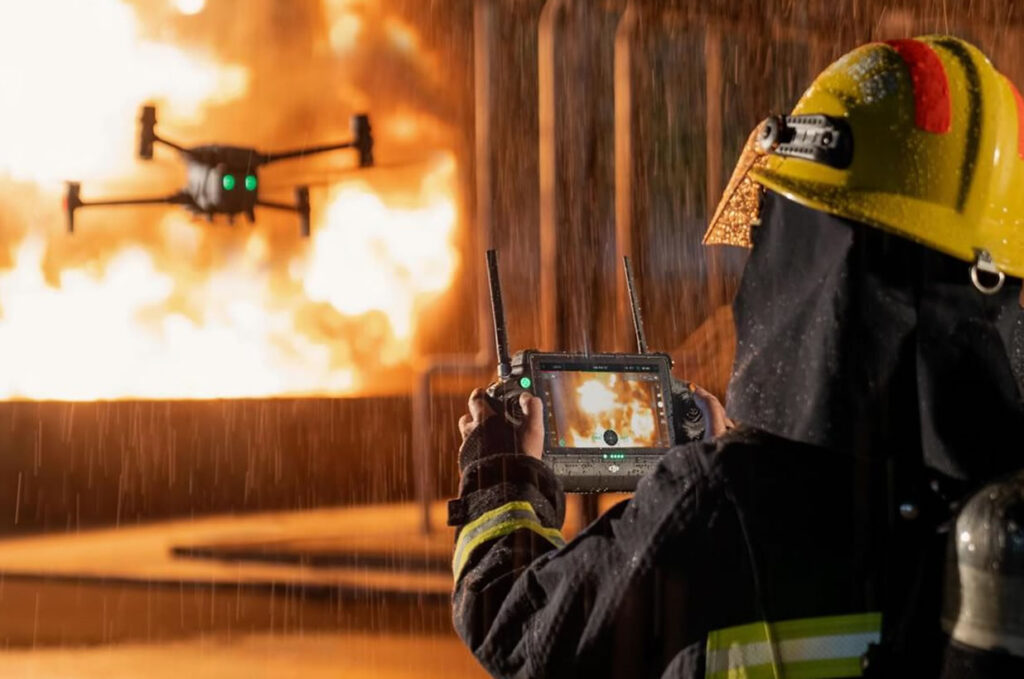
Smart Schools
Smart Schools Project: Innovation for Personalized and Efficient Education
General Description:
The Smart Schools Project aims to transform education through the use of advanced technologies that optimize both administrative management and the educational experience of students. This system focuses on the digitalization of key processes, such as attendance registration, exam management, and monitoring of student academic progress, while incorporating inclusive technologies that allow curriculum and teaching to be tailored to the specific needs of each student, including those with disabilities. Additionally, the system features real-time data analysis tools to provide administrators with valuable information on student performance and the efficiency of educational processes.
1. Components of the Smart Schools System:
1.1 Teacher and Student Attendance Registration:
The Smart Schools system uses biometric and geolocation technology to automatically record teacher and student attendance. This eliminates the manual registration process, minimizing errors and reducing the time spent on administrative tasks.
Technical Features:
- Facial or Fingerprint Biometrics: Use of facial or fingerprint recognition technology to record the presence of teachers and students at the start of classes.
- Geolocation via Mobile Apps: Students can mark their attendance through geolocation, allowing the system to automatically record their entry into the classroom or school.
- Automatic Notifications: Administrators and parents receive automatic reports in the event of non-attendance, ensuring immediate follow-up.
Advantages:
- Automation: The system records attendance in real time without manual intervention, avoiding fraud or human error.
- Administrative Efficiency: Administrators and teachers can access attendance reports instantly, improving human resource management.
- Efficient Communication: Parents and administrators receive immediate notifications about absences, facilitating follow-up and corrective action.
1.2 Digital Control System:
Smart Schools includes an academic activity control system that manages everything from subject assignment and schedules to tracking student grades and performance.
Technical Features:
- Cloud-based Platform: All academic data and records are centralized on a digital platform accessible from any device with an internet connection.
- Data Analysis Tools: The system uses artificial intelligence to analyze student academic performance, generating detailed reports for administrators and teachers.
Advantages:
- Real-time Monitoring: Teachers and administrators can access up-to-date information on student progress at any time.
- Optimization of educational management: The system enables the efficient allocation of resources, materials, and time to the students who need them most.
- Personalization of teaching: Reports allow teachers to adapt their teaching approaches according to each student’s individual performance.
1.3 Digitalization of Exams and Assessments:
The digital exam system allows for the creation, distribution, and automatic marking of online tests, streamlining the assessment process and improving security.
Technical Features:
- Online exam platform: Students can take exams from their mobile devices or personal computers, with real-time supervision from a moderator or teacher.
- Automated marking: Exams are marked automatically, generating immediate grades and avoiding errors in the assessment.
- Measurement of specific skills: Exams assess not only theoretical knowledge but also practical and applied skills, allowing for a more comprehensive assessment.
- Disability Accommodations: Exams are adapted to the needs of students with disabilities, including Braille text, subtitles, or extended-time exams.
Advantages:
- Reduction in Cheating and Plagiarism: The exam platform uses cheating detection technologies, such as online monitoring and question randomization.
- Real-Time Grading: Automatic grading allows for immediate feedback so students can quickly correct their mistakes.
- Accessibility for all: Exams are accessible to students with disabilities, ensuring that everyone has a fair opportunity to demonstrate their knowledge.
1.4 Educational Inclusion: Program and Curriculum Adaptation:
Smart Schools includes a curriculum adaptation system for students with disabilities, ensuring inclusive education. This system personalizes course content based on student needs, enabling more effective and accessible learning.
Technical Features:
- Adaptive Inclusive Platform: Curriculums are tailored to students’ abilities, with support materials such as audiobooks, subtitles, and Braille content.
- Personalized Programs: The system adjusts the pace and difficulty of lessons for students with special educational needs, based on their past performance.
- Assistive Technology: The use of technological tools such as screen readers, alternative input devices, and support software facilitates access to education for all students.
- Collaboration with Integration Professionals: Support programs are designed in conjunction with special education and curriculum adaptation specialists.
Advantages:
- Universal Accessibility: All students, regardless of their abilities, can access the curriculum with the necessary adaptations.
- Improved inclusion: The system ensures that students with disabilities have the same opportunities for academic success as their peers, eliminating access barriers.
- Reduced shortage of integration teachers: By having an adaptive system, the need for specialized personnel is minimized, optimizing available resources.
1.5 Integration with Parents and Administrators:
The system enables continuous communication between parents, administrators, and teachers, improving transparency and collaboration in the educational process.
Technical Features:
- Parent Mobile App: Parents can monitor their children’s academic progress, receive absence notifications, grades, and school events.
- Administrator Dashboard: Administrators have access to a comprehensive view of the institution’s performance, including attendance, test results, and student needs.
- Direct Communication Platform: Teachers, parents, and administrators can communicate through direct messages, improving collaboration and problem-solving.
Advantages:
- Transparency: Parents have full visibility into their children’s academic performance, making it easier to track their progress.
- Improved Engagement: Parents can be actively involved in the educational process, providing additional support at home if needed.
- Effective management for managers: Managers have access to real-time data that allows them to make informed decisions about resource allocation and improving educational quality.
2. Advantages of the Smart Schools Project:
Digitizing attendance, exams, and grading reduces administrative burden, allowing educators to focus more on teaching than on repetitive tasks.
Adapting the curriculum for students with disabilities ensures that all students receive a personalized, quality education, regardless of their educational needs.
Data analytics tools allow educators to quickly identify areas for student improvement, optimizing teaching plans and offering personalized solutions.
Automating processes such as exam marking and attendance tracking reduces teachers’ workload, allowing them to spend more time interacting with students.
The integration of communication platforms improves the relationship between parents, teachers, and administrators, making it easier to monitor student progress and resolve problems.
3. Conclusion:
The Smart Schools Project redefines education through the use of advanced technology to make it more inclusive, accessible, efficient, and personalized. This system not only optimizes administrative processes but also offers a comprehensive solution for the education of students with disabilities, ensuring equal opportunities for all. By integrating adaptive technologies and analytical tools, this system improves educational quality, reduces access barriers, and prepares students to face the challenges of the future.

Tourist Information Totem Project:
Innovation in Urban Safety and Culture
General Description:
The Tourist Information Totem Project aims to provide tourists and citizens with an interactive tool that offers cultural, historical, and tourist information about key points in the city, in addition to contributing to public safety through rapid emergency response capabilities. These totems will be strategically located on the corners of main avenues and in areas with high tourist traffic, providing detailed information about places of interest, as well as useful information such as the location of nearby police stations, hospitals, and health centers. In emergency situations, the totems will also be equipped with an alert system that, if activated, will automatically notify the nearest authorities, including police and ambulances.
1. Components of the Tourist Information Totem System:
1.1 Tourist, Cultural, and Historical Information:
Each totem Will be designed to provide detailed and engaging information for tourists, using interactive touchscreens and augmented reality (AR) technologies to enhance the learning experience.
Technical Features:
- High-definition touchscreens: The totem displays will show graphic information, interactive maps, photographs, and videos of nearby points of interest, monuments, museums, and historical sites.
- Augmented Reality (AR): Users will be able to access immersive experiences, viewing historical or cultural content about specific locations, such as a digital reconstruction of a monument or the history of a neighborhood.
- Multilingual Content: Information will be provided in multiple languages, adapting to the needs of international tourists.
- Integrated Tour Guides: The totem displays will offer personalized recommendations based on the user’s current location, guiding them to nearby attractions, restaurants, or cultural activities.
Advantages:
- Easy Access to information: Tourists will have immediate access to detailed information without the need for additional devices. ○ Immersive experience: The integration of augmented reality allows for a much richer and more interactive experience.
- Promoting local culture: By providing easy access to local history and culture, interest in the city’s heritage and traditions is increased.
1.2 Information on Nearby Police Stations and Hospitals:
In addition to cultural information, the totems will offer practical details that may be crucial for tourists, such as the location of the nearest hospitals and police stations, as well as other emergency services.
Technical Features:
- Interactive Maps: The maps will provide real-time locations of points of interest such as hospitals, police stations, and fire stations, including addresses, estimated arrival times, and fastest routes.
- Quick Contact Information: They will include direct phone numbers for emergencies, such as police, fire, and health services.
- Advanced Geolocation: The totems will use GPS technology to offer a personalized experience, allowing tourists to obtain information about the nearest locations and facilitate their mobility.
Advantages:
- Access to Critical Information: The immediate location of hospitals and police stations helps tourists resolve emergency situations quickly and effectively.
- Enhanced Security: Knowing the location of emergency services and quickly accessing contacts can be critical in risky situations.
1.3 Emergency Alert System:
The alert system is one of the totems’ most innovative features. In the event of an emergency, such as a robbery, attack, or any other threat, the totem can be activated instantly and send a signal to local authorities, including the police and ambulances.
Technical Features:
- Emergency Button: The totems will be equipped with a visible emergency button that the user can press if they feel in danger or witness a risky situation.
- Voice and Behavior Detection: The totems will be able to detect suspicious situations, such as screaming or aggression, through a system of acoustic sensors and security cameras, sending automatic alerts to local authorities.
- Direct Connection to Response Units: When the alert system is activated, the totem will automatically send a signal to the mobile devices of the nearest police units and ambulances, notifying them of the exact location of the incident.
- Two-Way Communication Interface: In the event of an emergency, the totem will have the ability to allow direct communication with the emergency center to coordinate the response more efficiently.
Advantages:
- Rapid and effective response: The ability to trigger immediate alerts improves the efficiency of authorities’ response to an emergency.
- Greater safety for tourists and citizens: Totems act as a quick access point for help in emergency situations, increasing the feeling of security in the city.
- Constant monitoring: Acoustic sensors and security cameras can quickly identify dangerous situations, allowing for more effective intervention.
1.4 Interactivity and Accessibility:
The tótems are designed to be accessible to everyone, including people with disabilities and those with special needs.
Technical Features:
- Adaptive touchscreens: The user interface is fully adaptable, with Braille text options, voice support, and subtitles.
- Voice support: Tourists will be able to interact with the totem using voice commands, facilitating access to information without physical contact.
- Virtual keyboard: For people with motor disabilities, the system includes a virtual keyboard accessible via touchscreens.
Advantages:
- Inclusion: The inclusive design allows all users, regardless of their abilities, to access information.
- Ease of use: Interactivity through voice and touchscreens improves the user experience, making information available to everyone.
2. Implementation and Location:
The tótems Will be located at strategic points throughout the city, especially in tourist areas, plazas, parks, and high-traffic areas. Each totem will be connected to a centralized network that will monitor its operation and receive emergency alerts.
3. Beneficios del Proyecto:
Totems not only serve as an information tool, but also become active safety points, providing direct access to help in emergency situations.
Integrating history, culture, and key tourist attractions into a single platform fosters interest in exploring the city further, while multilingual information facilitates the experience for international tourists.
Implementing technologies such as geolocation, augmented reality, and emergency systems connects the city with a smart urban planning model, making the visitor experience more engaging and safer.
Centralizing information on totems reduces the need for additional staff to provide directions and answer questions, in addition to optimizing resources in emergencies.
The accessibility of the totems, with support for people with disabilities, ensures that all citizens and tourists, regardless of their abilities, can enjoy the benefits of this innovative system.
